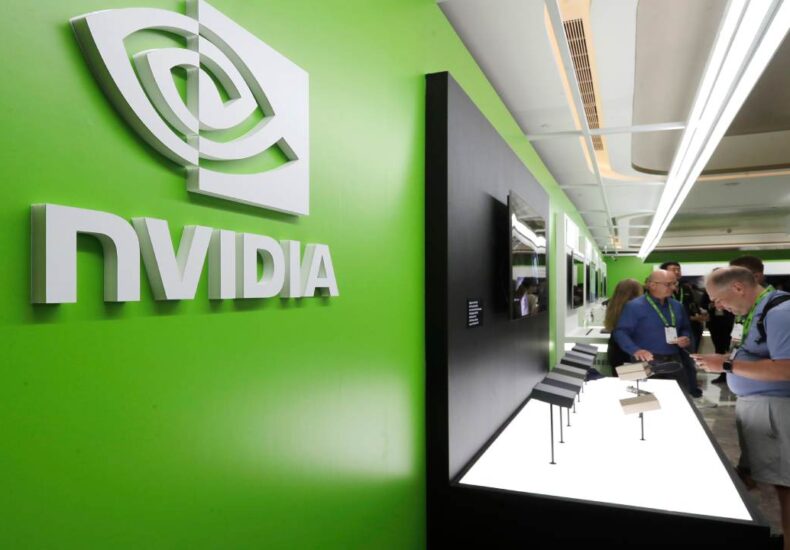
Nvidia Becomes the First $5 Trillion Company: A New Era of Tech Power
Fundacion Rapala – Nvidia has officially become the world’s first $5 trillion company, a feat that cements its dominance not just in technology, but in modern economic history. This unprecedented valuation was reached at Wednesday’s market open, only three months after Nvidia crossed the $4 trillion threshold. The company’s stock (NVDA) jumped 3% as investors celebrated another victory for the AI chip giant. What makes this moment remarkable is how fast it happened Nvidia took just over a year to climb from $3 trillion to $4 trillion, and then a mere quarter to hit $5 trillion. In my view, this surge reflects more than market momentum; it captures a global shift toward an AI-driven economy where chips, not oil, are the new currency of power.
The AI Boom That Propelled Nvidia to the Top
At the heart of Nvidia’s meteoric rise lies one undeniable factor: artificial intelligence. The company’s advanced GPUs have become the backbone of AI training systems powering everything from ChatGPT to self-driving cars. Unlike its competitors, Nvidia managed to dominate both the hardware and software ecosystems, making its technology indispensable to data centers worldwide. CEO Jensen Huang, known for his visionary leadership, has repeatedly described Nvidia as the “engine of the AI industrial revolution.” And he’s not wrong. Every major innovation in generative AI today from OpenAI’s language models to Tesla’s autonomous systems runs on Nvidia chips. It’s no exaggeration to say the company doesn’t just sell processors; it fuels the infrastructure of intelligence itself.
“Read More : GOP Oversight: Autopen Pardons ‘Void’? What the Final Report Says and What It Doesn’t”
Trump, Xi, and Nvidia’s Future in China
Another key factor behind Nvidia’s stock surge this week was optimism surrounding potential talks between U.S. President Donald Trump and China’s Xi Jinping. The discussions could lead to China reopening access to Nvidia’s high-end AI chips, currently restricted under U.S. export laws. The Chinese market, long one of the biggest consumers of semiconductors, represents billions in untapped potential. Huang’s recent keynote at the GTC AI Conference in Washington hinted at his confidence in that direction. His warm acknowledgment of Trump signaled not only political pragmatism but also strategic foresight Nvidia understands that diplomacy now plays a critical role in determining the flow of silicon and, by extension, global power.
Nvidia, OpenAI, and Apple
In a surprising but powerful move, Nvidia recently announced a $100 billion partnership with OpenAI, under which the ChatGPT maker will purchase billions worth of Nvidia chips over time. Simultaneously, Nvidia revealed a $5 billion investment in Intel, a struggling rival in the semiconductor race. These moves demonstrate Nvidia’s strategic dominance it’s not just competing but creating an ecosystem of dependence across the tech industry. Meanwhile, Apple, another trillion-dollar titan, recently crossed the $4 trillion mark. Yet, while Apple thrives on consumer appeal, Nvidia thrives on industrial necessity. In essence, Apple sells the future of lifestyle; Nvidia sells the infrastructure that makes that future possible.
Hype or a Sustainable Revolution?
As Nvidia’s valuation soars, analysts are increasingly divided. Some believe we’re witnessing the start of an AI-driven economic transformation; others warn of a speculative bubble reminiscent of the dot-com era. The company’s circular investments pouring billions into AI firms that, in turn, rely on Nvidia’s hardware create both synergy and risk. However, Nvidia’s leadership argues that global AI infrastructure spending, expected to reach $4 trillion by 2030, justifies the optimism. Personally, I think the truth lies in between. There’s undeniable hype, but unlike 2000’s internet boom, AI already powers tangible systems that shape industries. The question is no longer “if” AI will transform the world it’s how fast and how far Nvidia can lead that transformation.
The Chipmaker That Rewired the Global Economy
In the last quarter alone, Nvidia generated nearly $26 billion in net income, a figure unimaginable a decade ago for any semiconductor company. Its GPUs, once used mainly by gamers, now run the world’s largest AI models, scientific simulations, and defense systems. What makes Nvidia’s story extraordinary is how it transformed from a niche graphics company into the foundation of a new industrial revolution. Under Huang’s leadership, it has become not just a corporate powerhouse but a symbol of human ingenuity. Whether or not this valuation holds, Nvidia’s impact on global technology and economics is already irreversible. The age of AI isn’t coming it’s here, and Nvidia built its heart.